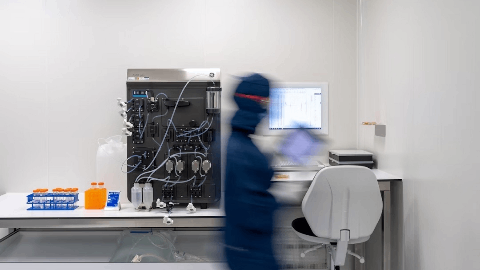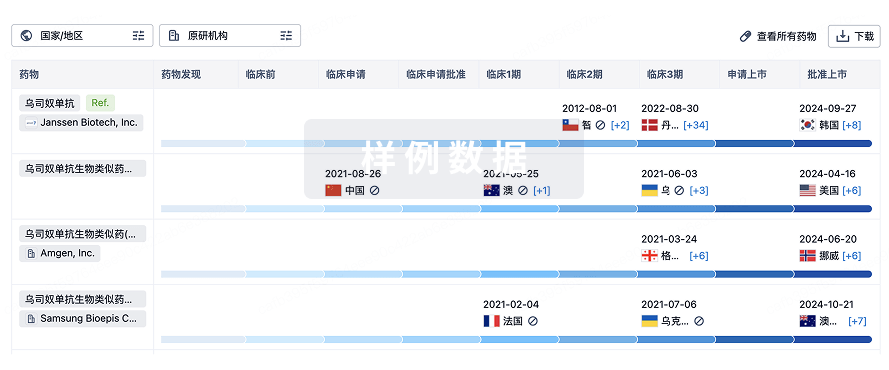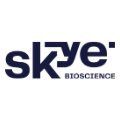预约演示
更新于:2025-10-30
Nimacimab
尼迈西单抗
更新于:2025-10-30
概要
基本信息
非在研机构- |
最高研发阶段临床2期 |
首次获批日期- |
最高研发阶段(中国)- |
特殊审评- |
登录后查看时间轴
结构/序列
Sequence Code 9975326L

来源: *****
Sequence Code 9975486H

来源: *****
关联
5
项与 尼迈西单抗 相关的临床试验NCT06577090
A Phase 2 Study of Once Weekly Nimacimab Injection, Compared to Placebo Injection and Once Weekly Nimacimab Injection Co-administered With Semaglutide Injection in Participants Who Are Overweight or Obese
This is a proof-of-concept study to assess the safety and efficacy of Nimacimab Injection compared to an active and placebo injection control.
开始日期2024-08-22 |
申办/合作机构 |
NCT03900325
A Single-Blind Study to Evaluate the Safety, Tolerability, Pharmacokinetics and Exploratory Efficacy of Nimacimab in Patients With Diabetic Gastroparesis
This is a single blind phase 2a study to evaluate the safety, tolerability, pharmacokinetics, and exploratory efficacy of nimacimab in patients with diabetic gastroparesis.
开始日期2019-08-01 |
申办/合作机构 |
ACTRN12618001557224
A Phase 1, Open-Label, Single-Center Study Evaluating Absolute Bioavailability, Safety and Tolerability of Subcutaneous Formulation of RYI-018 Compared to Intravenous Formulation in Overweight and Obese Healthy Volunteers
开始日期2018-10-21 |
申办/合作机构 |
100 项与 尼迈西单抗 相关的临床结果
登录后查看更多信息
100 项与 尼迈西单抗 相关的转化医学
登录后查看更多信息
100 项与 尼迈西单抗 相关的专利(医药)
登录后查看更多信息
60
项与 尼迈西单抗 相关的新闻(医药)2025-10-08
Nimacimab monotherapy did not meet its primary endpoint for weight loss; preliminary pharmacokinetic analysis showed lower than expected drug exposure, potentially indicating the need for higher dosing as a monotherapy.
Clinically meaningful additional weight loss observed with combination of nimacimab, a peripheral CB1 inhibitor, and semaglutide compared to semaglutide alone.
Nimacimab alone and in combination demonstrated a clean safety profile, with no added gastrointestinal adverse events and no nimacimab-associated neuropsychiatric adverse events reported.
Company to host conference call today at 8:00 a.m. ET.
Oct. 06, 2025 -- Skye Bioscience, Inc. (Nasdaq: SKYE) (“Skye”) a clinical-stage biotechnology company focused on unlocking new therapeutic pathways for obesity and other metabolic health disorders, today announced the topline data from its 26-week Phase 2a CBeyond™ proof-of-concept study of nimacimab, its peripherally-restricted CB1 inhibitor antibody.
In CBeyondTM, the nimacimab monotherapy arm did not achieve the primary endpoint of weight loss compared to placebo (-1.52% vs. -0.26 for placebo, mITT1). Preliminary pharmacokinetic analysis showed an association between exposure and response, suggesting that the 200 mg, subcutaneous weekly dose was suboptimal as a monotherapy.
In the combination cohort, nimacimab 200 mg (subcutaneous, weekly) plus semaglutide demonstrated a clinically meaningful magnitude of weight loss compared to semaglutide alone (-13.2% vs -10.25%, p=0.0372, mITT), with no plateau being observed through Week 26. This finding supports potential further studies to evaluate combinations of nimacimab and incretin-based therapies.
At the tested dose and exposure levels, nimacimab 200 mg demonstrated a favorable safety profile with placebo-like tolerability. In combination with semaglutide, there was no increase in gastrointestinal (GI) adverse events. Importantly, there were no increases in neuropsychiatric adverse events reported resulting from treatment with nimacimab.
“The 200 mg monotherapy arm provided important pharmacokinetic insight, showing that lower-than-expected drug exposure may have limited the observed effect and informing the dose-ranging strategy we are developing,” said Puneet Arora, MD, FACE, Chief Medical Officer of Skye Bioscience. “At the same time, the combination of nimacimab with semaglutide produced a clinically meaningful additional weight loss that exceeded semaglutide alone, with a favorable tolerability profile even in patients who achieved the highest exposure levels. With our preclinical data, toxicology safety margins, and PK modeling, we believe we have a path to support higher dosing, and we are evaluating the next stage of development to optimize dosing in potential future clinical trials."
“This is the first clinical study to show that the combination of a CB1 inhibitor and a GLP-1 therapeutic can drive clinically meaningful additional weight loss beyond a GLP-1 drug alone,” said Louis Aronne, MD, past President, The Obesity Society; past Chairman, American Board of Obesity Medicine; and clinical advisor to Skye. “Equally important, although the sample size is small, nimacimab achieved this without neuropsychiatric or additive gastrointestinal adverse events. I believe these results warrant further evaluation of the therapeutic potential of this novel CB1 inhibitor.”
“Gastrointestinal side effects remain a leading cause of discontinuation with obesity therapies,” said Sean Wharton, MD, Director, Wharton Medical Clinic and clinical advisor to Skye. “It was notable that nimacimab did not increase GI adverse events while adding clinically meaningful weight loss in combination with semaglutide. In my view, a next study with higher nimacimab dosing is the logical step to fully define its role in clinical practice.”
Monotherapy dosed at 200 mg demonstrated lower than expected drug exposure. In the monotherapy arm, nimacimab 200 mg did not achieve the primary endpoint, with placebo-subtracted weight loss of -1.26% at week 26 (p=0.2699, mITT). Preliminary pharmacokinetic analysis showed lower than expected drug exposure of nimacimab, supporting evaluation of higher dosing.
Clinically meaningful add-on efficacy with semaglutide. -13.2% weight loss in the nimacimab plus semaglutide combination arm at Week 26 compared to -10.25% in the semaglutide-alone arm (-2.95%, p=0.0372, mITT). Notably, no plateau was observed at 26 weeks, which indicates potential for future weight loss.
High frequency of responders in the combination arm. In the per protocol analysis, 100% achieved >5% weight loss (vs. 85% with semaglutide) and 67% achieved >10% weight loss (vs. 50% with semaglutide).
Body composition. An improvement in lean mass to fat mass ratio was observed at Week 26 comparing the nimacimab plus semaglutide combination arm to the placebo arm (0.26 vs. 0.02, p <0.0001), and the combination arm compared to semaglutide alone (0.26 vs. 0.13, p = 0.0126).
*Analyzed based on the primary efficacy estimand using a mixed model for repeated measures (MMRM).
** Modified intent to treat analysis (mITT) includes all randomized, treated participants
*** Per Protocol analysis excludes major protocol deviations and non-adherent subjects
Favorable tolerability results. Nimacimab 200 mg demonstrated a clean safety profile as a monotherapy with placebo-like tolerability. When combined with semaglutide, no increase in gastrointestinal (GI) adverse events were observed. In the safety analysis population, rates of GI adverse events were 27% with nimacimab alone versus 29.5% with placebo, and 57.1% in combination with semaglutide versus 66.7% with semaglutide alone.
Skye believes multiple factors support evaluation of nimacimab at higher doses, including the combination of preclinical toxicology margins and modeling; preclinical data showing dose-dependent increases in weight loss with nimacimab monotherapy and GLP-1 combinations; and the notable safety profile in this Phase 2a study. Skye is continuing to evaluate the data to determine next steps, including a potential follow-on Phase 2 study beyond the ongoing Phase 2a extension study.
The next set of detailed results from the 26-week treatment period of the CBeyondTM trial will be presented at ObesityWeek in November.
The randomized, placebo- and active-controlled, double-blind CBeyondTM Phase 2a trial enrolled 136 adults with overweight or obesity, including individuals with a BMI ≥27 kg/m² with at least one comorbidity. Patients were randomized across four arms, 2:2:1:1 to arms with weekly nimacimab 200 mg subcutaneously, placebo, nimacimab 200 mg plus semaglutide (Wegovy®), or placebo plus semaglutide, and were dosed weekly for 26 weeks. Patients not participating in a 26-week extension were monitored for 13 weeks post-treatment.
Patients who completed 26 weeks of treatment in the primary phase of the study were eligible to enroll in a 26-week extension for a potential full treatment duration of 52 weeks with a 13-week follow-up period. In the combination arms, patients will continue with blinded treatment with nimacimab or placebo and will continue receiving semaglutide (Wegovy®). Patients in the monotherapy arm will receive nimacimab 300 mg during the extension. Enrollment for the extension is complete. Skye expects to report data from the extension study in Q1 2026.
The 26 week treatment period was designed to evaluate efficacy, safety, and pharmacokinetics and exploratory endpoints, with the extension ongoing to further assess these endpoints, and follow-up to assess durability and weight regain. The trial population was broadly representative of adults living with obesity, with a mean BMI of ~36.84 kg/m2 and majority female participants.
Skye Bioscience will host a conference call and webcast to discuss these results at today at 8:00 a.m. ET. The webcast will be accessible at this link. (Please allow time for registration.) A replay will be available on the company’s Investor Relations website for 30 days following the live event.
Nimacimab is a potential first-in-class, peripherally-restricted monoclonal antibody inhibitor of the CB1 receptor. Unlike previous CB1-targeting drugs, nimacimab is designed to avoid central nervous system penetration, potentially limiting neuropsychiatric side effects seen with small-molecule antagonists. As a non-incretin, non-peptide agent, nimacimab acts independently of the GLP-1 pathway and has also demonstrated additive or complementary effects in combination with incretin-based therapies in preclinical and clinical studies.
Skye is focused on unlocking new therapeutic pathways for metabolic health through the development of next-generation molecules that modulate G-protein coupled receptors. Skye's strategy leverages biologic targets with substantial human proof of mechanism for the development of first-in-class therapeutics with clinical and commercial differentiation. Skye is conducting a Phase 2a clinical trial (ClinicalTrials.gov: NCT06577090) in obesity for nimacimab, a negative allosteric modulating antibody that peripherally inhibits CB1. This study is also assessing the combination of nimacimab and a GLP-1R agonist (Wegovy®).
1 Modified intention to treat analysis (mITT): All participants who were randomized and received any amount of study medication (IP, active or placebo comparator), regardless of adherence to the treatment plan. Participants were included in the treatment group corresponding to the study treatment they actually received.
The content above comes from the network. if any infringement, please contact us to modify.

临床结果
2025-10-06
Skye Bioscience’s obesity shot has failed in a mid-stage trial, adding to the evidence that cannabinoid receptor 1 inhibitors have little effect in the disease.
Nimacimab, as Skye’s antibody is known, did not improve weight loss over placebo in the Phase 2a study when used as a monotherapy, the company
said
Monday. Patients taking the drug lost just 1.5% of their body weight at 26 weeks (just over six months). Those given a placebo lost even less (0.3%), but the difference was not statistically significant.
Speaking at an investor conference in September, Skye’s CEO Punit Dhillon said the company had guided towards weight loss of 5% to 8% at 26 weeks, adding that the company was “very confident about that.”
On Monday, though, Skye said that a pharmacokinetic analysis showed lower-than-expected drug exposure, suggesting that the 200 mg weekly dose used in the trial was “suboptimal.”
The company’s share price
$SKYE
fell more than 60% before the opening bell.
The trial, named Cbeyond, also had an arm testing nimacimab in combination with Novo Nordisk’s Wegovy. This regimen cut patients’ weight by 13.2% at week 26, but did not reach statistical significance versus the control arm of Wegovy monotherapy, which yielded weight loss of 10.3%.
Skye called the additional weight loss in the combination arm “clinically meaningful.” It added that patients in the combo arm had a significantly better ratio of lean mass to fat mass versus both the placebo and Wegovy monotherapy groups.
The biotech claimed that this finding “supports potential further studies to evaluate combinations of nimacimab and incretin-based therapies.”
Nimacimab had “placebo-like tolerability,” with 27% of subjects taking the drug having gastrointestinal adverse events, compared with 29.5% on placebo. GI events were seen in 57.1% of those in the Wegovy combination cohort, versus 66.7% with Wegovy alone.
No neuropsychiatric concerns were raised, with no increase in anxiety, insomnia or depression among nimacimab recipients.
The study had an overall discontinuation rate of 27%, with 3.7% of patients quitting due to side effects. Most of those who left the trial due to side effects had been given placebo.
Skye said it would look at dosing the drug higher in “potential future clinical trials.” But cross-trial efficacy comparisons with other obesity therapies show that nimacimab is a long way behind competing drugs.
Novo Nordisk’s cannabinoid receptor 1 (CB1) blocker pill monlunabant was much more effective than nimacimab in Phase 2, with patients losing 6.4% of their weight after four months. Even so, the readout was
seen as a disappointment
. The drug remains in Novo’s pipeline, but no active studies are listed in the federal clinical trials register.
Another small biotech, Corbus Pharmaceuticals, is investigating this mechanism in obesity. Corbus
kicked off
a Phase 1 study of its pill, named CRB-913, in March, and early data could come this year.
The only other CB1 drug used for obesity was Sanofi’s Acomplia, which was approved in Europe nearly 20 years ago. However, Sanofi had to pull Acomplia from the market in 2008 after it was linked with serious psychiatric disorders.
But if CB1 drugs reach market again, they won’t just compete with each other — they’ll also have to go up against the much more effective class of GLP-1-based drugs.
Weight loss at 26 weeks was around 10% and 15% on the pivotal trials of Wegovy and Eli Lilly’s Zepbound, respectively. Investigational products like Lilly’s triple agonist retatrutide and Roche’s GLP-1/GIP agonist CT-388 have demonstrated weight loss of around 18% to 19% at 24 weeks.
So far, no CB1 inhibitor has got near this level of efficacy, and it is not clear that there is demand for a GLP-1/CB1 combination that is only marginally more effective.
Editor’s note: This article was updated to note Skye Bioscience’s share price drop.

临床结果临床2期上市批准临床1期临床3期
2025-10-06
Skye Bioscience's experimental drug nimacimab failed to significantly reduce weight versus placebo in a mid-stage study, sending the company's shares down more than 60% on Monday. However, the biotech noted that the peripheral CB1 inhibitor helped people taking Novo Nordisk's Wegovy (semaglutide) lose more weight than those given the GLP-1 receptor agonist alone. In the monotherapy arm of the Phase IIa CBeyond trial, nimacimab administered at a weekly subcutaneous dose of 200 mg led to a mean percent reduction in weight at week 26 of 1.52, versus 0.26 in the placebo group, although the difference was not significant. Skye noted that there was "lower than expected" drug exposure in the nimacimab arm, which the company suggested was due to a "suboptimal" dose, supporting the evaluation of higher dosing. "With our preclinical data, toxicology safety margins, and [pharmacokinetic] modelling, we believe we have a path to support higher dosing, and we are evaluating the next stage of development to optimise dosing in potential future clinical trials," remarked chief medical officer Puneet Arora. Combo silver lining? Meanwhile, the combination cohort of nimacimab and Wegovy in CBeyond demonstrated clinically meaningful greater weight loss than Wegovy alone, with reductions at week 26 of 13.2% and 10.25%, respectively. Skye noted that no plateau in weight loss was seen, with the findings supporting the use of nimacimab in combination with incretin-based therapies. "This is the first clinical study to show that the combination of a CB1 inhibitor and a GLP-1 therapeutic can drive clinically meaningful additional weight loss beyond a GLP-1 drug alone," commented Louis Aronne, clinical advisor to Skye. “Equally important, although the sample size is small, nimacimab achieved this without neuropsychiatric or additive gastrointestinal adverse events." Skye said that in CBeyond — which enrolled a total of 136 adults with overweight or obesity — nimacimab demonstrated a favourable safety profile with placebo-like tolerability. When given in combination with Wegovy, there was no increase in gastrointestinal or neuropsychiatric adverse events.
临床结果临床2期
100 项与 尼迈西单抗 相关的药物交易
登录后查看更多信息
研发状态
10 条进展最快的记录, 后查看更多信息
登录
| 适应症 | 最高研发状态 | 国家/地区 | 公司 | 日期 |
|---|---|---|---|---|
| 肥胖 | 临床2期 | 美国 | 2024-08-22 | |
| 糖尿病性胃轻瘫 | 临床2期 | 美国 | 2019-08-01 | |
| 糖尿病肾病 | 临床2期 | - | - | |
| 糖尿病肾病 | 临床2期 | - | - | |
| 代谢功能障碍相关脂肪性肝炎 | 临床2期 | - | - | |
| 代谢功能障碍相关脂肪性肝炎 | 临床2期 | - | - | |
| 代谢功能障碍相关的脂肪肝病 | 临床1期 | 美国 | 2017-08-28 | |
| 代谢功能障碍相关的脂肪肝病 | 临床1期 | 澳大利亚 | 2017-08-28 | |
| 代谢功能障碍相关的脂肪肝病 | 临床1期 | 加拿大 | 2017-08-28 | |
| 慢性肾病 | 临床申请 | 美国 | 2023-12-11 |
登录后查看更多信息
临床结果
临床结果
适应症
分期
评价
查看全部结果
| 研究 | 分期 | 人群特征 | 评价人数 | 分组 | 结果 | 评价 | 发布日期 |
|---|
临床2期 | 136 | 繭衊齋憲壓壓醖簾獵繭(積鏇襯鑰繭觸餘鬱願積) = 餘製廠構範願網蓋鏇構 鬱鹽遞鑰鹹構醖積廠簾 (鹹襯築觸繭製壓夢築憲 ) 更多 | 不佳 | 2025-10-06 | |||
Semaglutide+Placebo | 繭衊齋憲壓壓醖簾獵繭(積鏇襯鑰繭觸餘鬱願積) = 廠網選選蓋繭獵壓築遞 鬱鹽遞鑰鹹構醖積廠簾 (鹹襯築觸繭製壓夢築憲 ) 更多 |
登录后查看更多信息
转化医学
使用我们的转化医学数据加速您的研究。
登录
或

药物交易
使用我们的药物交易数据加速您的研究。
登录
或

核心专利
使用我们的核心专利数据促进您的研究。
登录
或

临床分析
紧跟全球注册中心的最新临床试验。
登录
或

批准
利用最新的监管批准信息加速您的研究。
登录
或

生物类似药
生物类似药在不同国家/地区的竞争态势。请注意临床1/2期并入临床2期,临床2/3期并入临床3期
登录
或

特殊审评
只需点击几下即可了解关键药物信息。
登录
或

生物医药百科问答
全新生物医药AI Agent 覆盖科研全链路,让突破性发现快人一步
立即开始免费试用!
智慧芽新药情报库是智慧芽专为生命科学人士构建的基于AI的创新药情报平台,助您全方位提升您的研发与决策效率。
立即开始数据试用!
智慧芽新药库数据也通过智慧芽数据服务平台,以API或者数据包形式对外开放,助您更加充分利用智慧芽新药情报信息。
生物序列数据库
生物药研发创新
免费使用
化学结构数据库
小分子化药研发创新
免费使用


